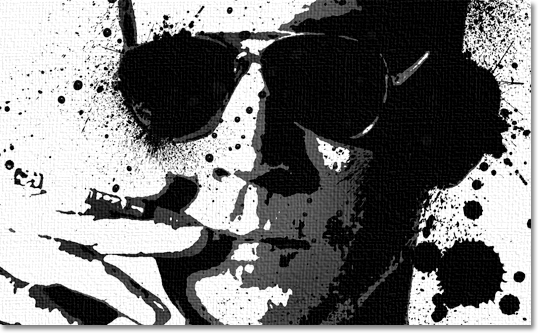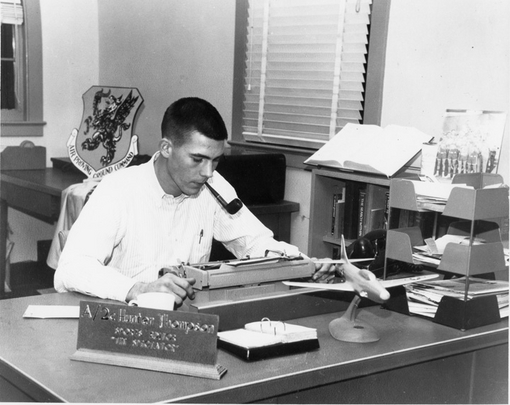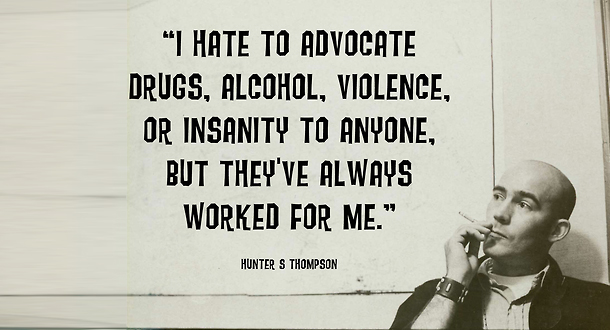
The Footloose American
Following the Hunter S. Thompson
Trail Across South America
Brian Kevin
(Broadway Books)

In 1962, Hunter S. Thompson was an unknown, twenty-five-year-old freelance reporter who undertook a year-long trek across South America, hoping to make his journalistic chops and a name for himself.Forty years later, Brian Kevin decided he wanted to follow in Thompson's footsteps through the continent, an odyssey through Colombia, Peru, Ecuador, Bolivia, Paraguay and Brazil. Like many of his generation, he first encountered Hunter S. through the 1998 film adaptation of his most popular book, Fear and Loathing in Las Vegas. But to his credit Kevin does his research, ferreting out the articles he filed for an upstart paper called the National Observer along with the letters he'd written on the road to his friends and editors.
There's little of what would become known as Thompson's Gonzo style in his writings from South America, but rather straight reportage on politics and social conflict.
Thompson's Latin America was on the frontlines of the Cold War and he takes a long, hard look at Kennedy's Alliance for Progress and the Peace Corps, designed to combat Cuban influence and the perceived communist incursion into the continent through a combination of U.S.-financed good deeds and propaganda.
It was clear that he was seeking evidence that what Kennedy was trying to do was both necessary and likely to succeed.
This Kentucky native was far removed from the political maverick he would later become, but there are a few glimpses of the future Dr. Gonzo and countercultural icon.
His first article for the National Observer on his foray into the no-man's land of the Guajira Peninsular to report on the smuggling trade begins,
"Here was a white man with 12 Yankee dollars in his pocket ... hauling a typewriter, grinning, sweating, no hope of speaking the language, no place to stay.
Kevin also begins with a Guajira adventure. "I was tearing across the roadless desert in the back of a jostling beer truck,"
a blast beat echoed across the flats, muffling the clink of contraband bottles, a death-metal soundtrack to the raw-bone panorama of sand and sky.
As I followed Kevin's journey, following Thompson, I realized that I had also, albeit inadvertently, taken much of that same route during my footloose years in the early to mid 70s, some dozen years after Hunter Thompson and forty or so before Brian Kevin's travels.
His description of Riohacha, gateway to the Guajira, was totally unrecognizable from the dusty frontier town I remembered. In the grip of a natural gas boom, this affluent city is filled with shopping malls, trendy seafront boardwalks, parks and museums.
But some things don't change: the bone-jarring, kidney-bruising truck journeys over the hard packed dirt and washboard roads through the unrelenting dun-colored landscape remains the reality of travel in the Guajira. Now, as then, every hole-in-the-wall grocery is crammed with cheap Johnny Walker and Marlboro cigarettes and Kevin's Guajira still holds a hint of menace and danger.
But the lawless wasteland where the swaggering loin cloth-clad and pistol-packing Wayuu Indians used to control the smuggling business, riding shotgun on the truck convoys filled with contraband and bound for the interiors of Columbia and Venezuela seems to be a thing of the past.
Today there is more governance in the Guajira, the Wayuu have been disarmed and the contraband is run by what's left of the cartels and right-wing militia groups. Often misguided government programs and non-profit initiatives have left the once proud and independent Wayuu stranded in poverty and depending on handouts.
I felt some sympathy for Brian Kevin trying to emulate Thompson's adventures of fifty years ago on the 21st Century continent, with its blanket cellphone coverage, wi-fi, selfies and Facebook and hostels filled with twenty-somethings skyping home to mom.
Wisely The Footloose American doesn't attempt to emulate Thompson's gonzo style; Kevin's lively prose is his own and his insights and analyses are often lucid, although he sometimes strays into a conventional travelogue of his own ups and downs on the continent.
In part, the book aims to reveal the man behind the myth, but mostly Kevin uses Thompson's work as a guide to discover how the same political, cultural and social issues of South America have (or haven't) changed since Thompson wrote about them 50 years ago.
While Thompson hung out with U.S. embassy types and Alliance officials, Kevin finds his sources among the ranks of the "voluntourists" the NGOs and Peace Corps members.
Where the Alliance and the Peace Corps were designed to combat negative impressions of the U.S. generated by Cuban information outfits, today's "Propaganda Affairs Section" of the State Department is stuck with the task, Kevin observes, of "fending off the American culture machine itself,"
the more pervasive and not always flattering elements of our society that manage to promote themselves whether we like it or not.
Kevin encounters a broad spectrum of tourists, from the "world changers hopping from volunteer gig to volunteer gig" to "hedonists ... partying their way across the continent."
Some of this do-goodery gets a little ponderous, but Kevin shows he has a good eye for weirdness that all travelers hope to encounter.
This is from his first day in La Paz, Bolivia. "Bolivia is land-locked, very poor, and most of it sits at extremely high altitudes (oh, say 13,000 ft. or so). Tourists have an alarming tendency to suddenly pass out, dropping like flies on the sidewalks." Thompson described the place as serious weird, a sort of Never-Never Land, and apparently not much has changed over the last 50 years or so.

At a busy intersection ... I came across another oddity: pairs of costumed zebras that dance and cavort at traffic lights during rush hours, distracting drivers so that pedestrians can cross. The city evidently employs about one hundred such plushies, and since their introduction in the early 2000s, they've helped alleviate the bottlenecks and road rage that often characterize urban streets in South America.
I watched a pair of them frolicking out the window when I stopped for breakfast at a small cafe, an otherwise normal luncheonette that played Michael Bolton's "How Am I Supposed to Live Without You" on repeat for over an hour. The diner was out of coffee, so the waiter talked me into a Bolivian alternative, a bright-purple corn drink called api, which was sickeningly sweet and thoroughly awful.
"Welcome to Never-Never Land, I thought, and I sipped my purple coffee while Michael Bolton crooned and the zebras formed a chorus line in the intersection."
As his journey progressed, Thompson became increasingly cranky, impatient with bugs and recurring health problems and ground down by the unrelenting poverty, bumpy truck rides and cities, some chaotic, and others, like Asunción, "as lively as Atlantis and nearly as isolated."
It is Kevin's contention that because of that year on the southern continent Hunter S. Thompson would become America's iconic "gonzo journalist" born in the streets of Rio, the mountains of Peru, and the black market outposts of the Guajira.
Rather than making him more cosmopolitan, Thompson's travels in South America brought out his Americanness and made him more acutely attuned to life in the US. At the close of his journey he wrote, "After a year of roaming around down here the main thing I've learned is that I now understand the United States, and why it will never be what it could have been, or at least tried to be."
--- Warren Sharpe